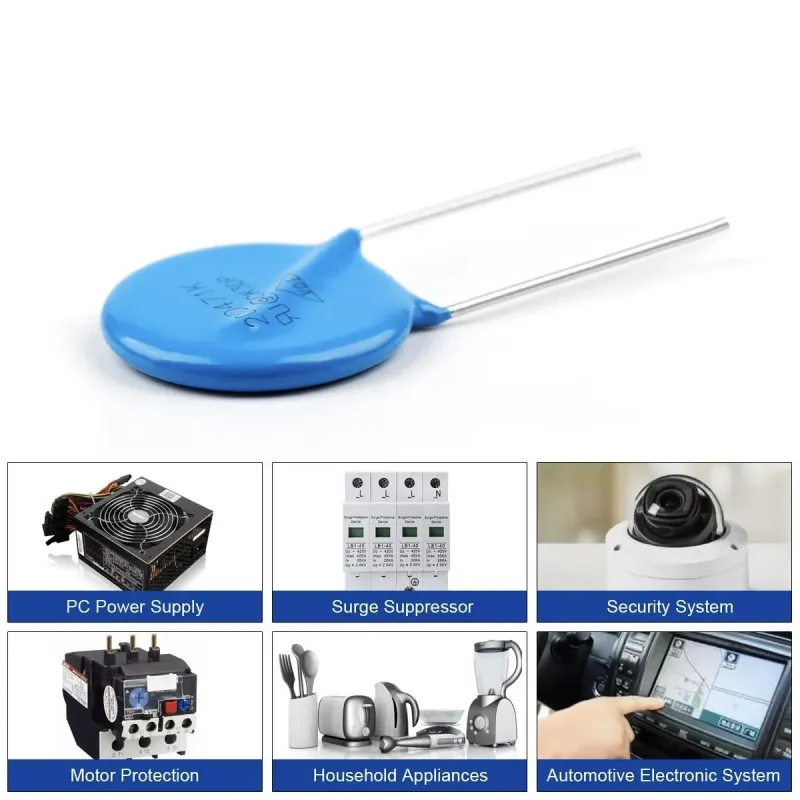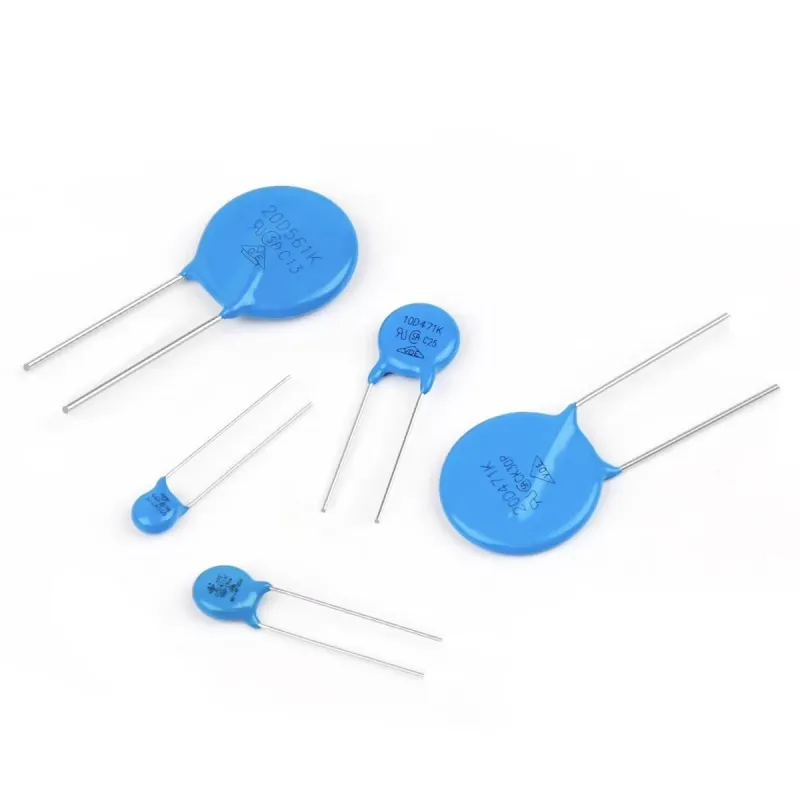









- Stock: In Stock
- Model: A1517.7D201K
7D201K Varistor 130VAC - 200VDC 7mm
The purpose of using varistors is to suppress voltage fluctuations in a circuit—that is, to protect the circuit against voltage surges.
The working principle of varistors is based on their parallel connection to the circuit. When the voltage increases, they decrease their resistance; when the voltage drops, they increase their resistance, thereby damping the voltage variations. This behavior operates on the following principle: below the rated voltage (which is written on the component), the varistor conducts no current. However, once the applied voltage exceeds the rated value, the varistor begins to conduct by decreasing its resistance, absorbing the excess voltage and protecting the circuit components from damage.

🧪 Structure and Material
Also known as Voltage Dependent Resistors (VDRs) or Voltage-Controlled Resistors, varistors are most commonly made of Zinc Oxide (ZnO), though they can also be manufactured from materials like Silicon Carbide (SiC) or Titanium Dioxide (TiO₂). These materials are compressed into a disk shape. Terminals are then attached to these disks, and the entire component is encapsulated in plastic to make it ready for use in circuits.
The varistor's voltage sensitivity is due to the electrical resistance between the crystalline grains of the disk material being affected by the applied voltage.
⚠️ Voltage Rating and Safety
Varistors are manufactured and sold according to their maximum acceptable voltage. If a voltage higher than this limit is applied, the varistor may fail or short-circuit. For this reason, product labels include specific codes that indicate their voltage rating, and these should be checked before use to ensure compatibility with the circuit.
🛠 Applications and Advantages
Varistors offer many advantages and are used in a wide range of applications—from household appliances and lighting to high-energy industrial AC protection or DC power lines. They can suppress power surges on electrical grids and protect components such as:
- Transistors
- MOSFETs
- Microprocessors
- Thyristor bridges
by being connected directly across mains power or semiconductor switches. - Common Application Areas:
- Telecommunications and communication systems
- Radio communication equipment
- Surge-protective power extension cords
- Microprocessor protection circuits
- Electronic equipment protection
- Cable TV voltage protectors
- Automotive electronic systems
- High-energy industrial AC systems
In energy systems, varistors are connected in parallel between the AC voltage source and the voltage-sensitive load circuits.
⚡ How It Works in a Circuit
In the example circuit, current always follows the path of least resistance. When a varistor is connected in parallel and the voltage is low, its resistance is high, so the current follows the regular path. However, when a high voltage spike occurs, the varistor's resistance drops sharply, diverting the excess current and preventing it from damaging the circuit.

🧷 Precautions When Using Varistors
- Do not use varistors in environments where the temperature exceeds nominal operating limits.
- Avoid direct exposure to sunlight or heat sources.
- Do not use in damp areas exposed to air drafts or flowing moisture.
- Avoid using in areas with dust, salt spray, or corrosive gases.
- Solvents such as thinner and acetone can damage the varistor's outer coating.
- Do not expose varistors to excessive vibration, shock, or pressure.
- Do not apply surge currents that exceed the rated maximum energy.



